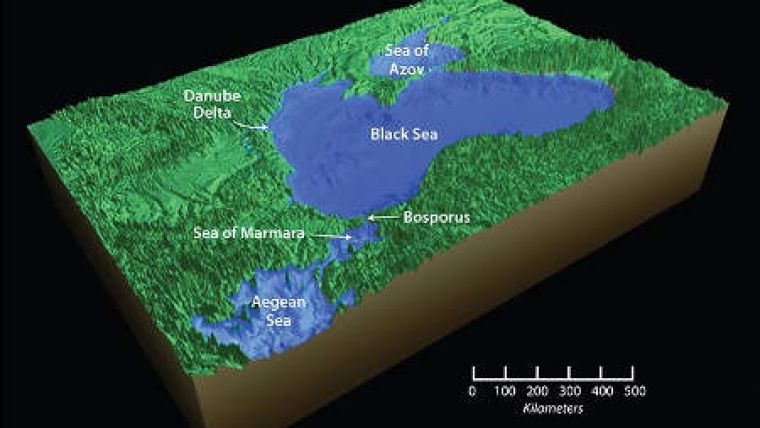Sediment Analysis Unveils Historic Life in Black Sea
Marine paleoecologist Marco Coolen from Woods Hole Oceanographic Institution (WHOI, USA) was amazed about the variety of past plankton species that have left behind their genetic make-up (i.e. the plankton paleome), as data mining showed.
The semi-isolated Black Sea is highly sensitive to climate-driven environmental changes, and the underlying sediments represent high-resolution archives of past continental climate and concurrent hydrologic changes in the basin. The brackish Black Sea is currently receiving salty Mediterranean waters via the narrow Strait of Bosphorus as well as freshwater from rivers and via precipitation.
During glacial sea level lowstands, the marine connection was hindered, and the Black Sea functioned as a giant lake.
Using a combination of ancient DNA techniques and tools to reconstruct the past climate, Coolen, Giosan, and their colleagues have determined how communities of plankton have responded to changes in climate and the influence of humans over the last 11,400 years. Their results will be published in the Proceedings of the National Academy of Sciences, USA (PNAS), available online on 6 May 2013.
Ancient DNA signatures in marine sediments have thus far been used for targeted reconstruction of specific plankton groups and those studies were based on very small clone libraries. The researchers now used a high throughput next generation DNA sequencing approach called pyrosequencing to look for the overall plankton changes in the Back Sea from the deglaciation to recent times.
Salinity and Temperature as Cause
The researchers reconstructed past changes in salinity and temperature as the possible causes for plankton community shifts in the Black Sea. To reconstruct the salinity, the WHOI team analysed sediments containing highly resistant organic compounds called alkenones, which are uniquely produced by Emiliania huxleyi—the same photosynthetic organism oceanographers study to determine past sea surface temperatures. By examining the ratio of two hydrogen isotopes in the alkenones, they were able to map the salinity trend in the Black Sea over the last 6,500 years.
The WHOI team was funded through the National Science Foundation and they collaborated with Chris Quince and his postdoc Keith Harris from the Computational Microbial Genomics Group at the University of Glasgow, and with micropaloentologist Mariana Filipova-Marinova from the Natural History Museum in Varna, Bulgaria.
The new findings show how sensitive marine ecosystems are to climate and human impact. The high throughput sequencing of ancient DNA signatures allows to reconstruct a large part of ancient oceanic life including organisms that are not preserved as fossils.
Coolen added that ancient plankton DNA was even preserved in the oldest analysed Black Sea lake sediments when the entire water column was most likely well mixed and oxygenated. This means that ancient plankton DNA might be widely preserved in sediments and can likely be used to reconstruct past life in the majority of oceanic and lake environments.














